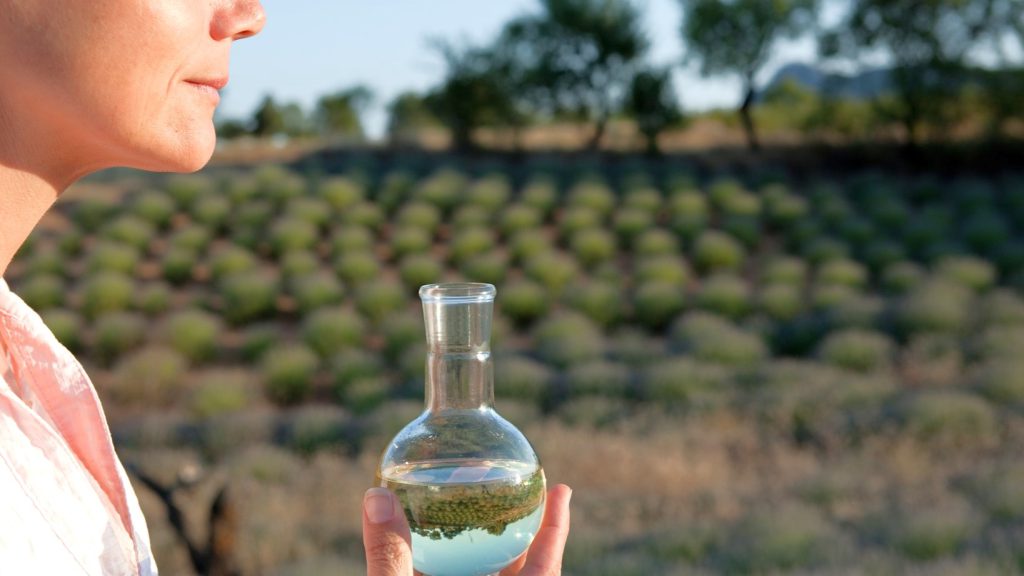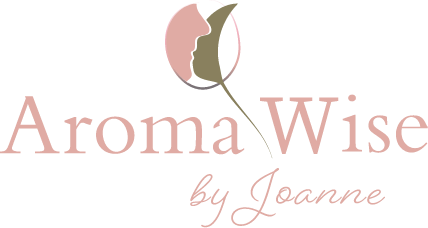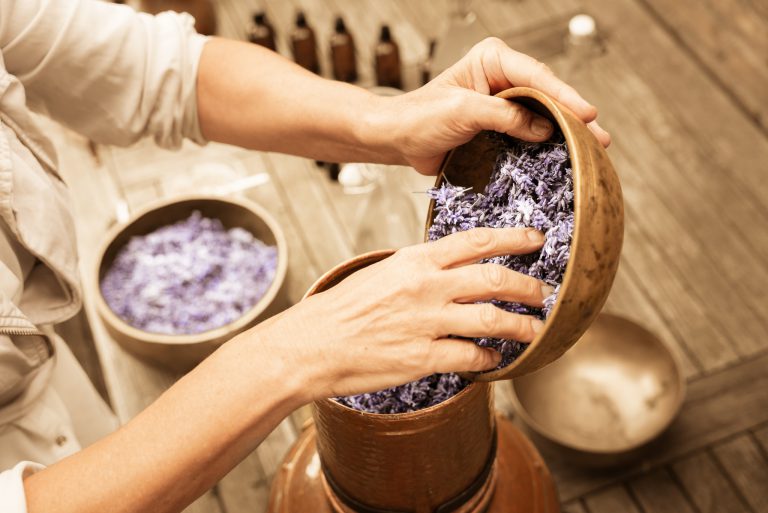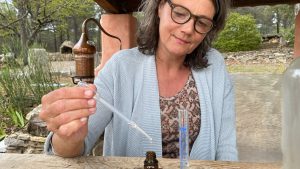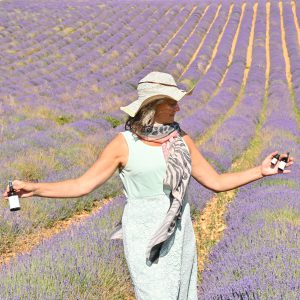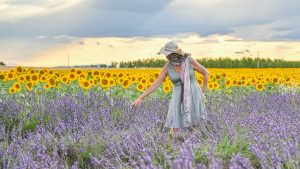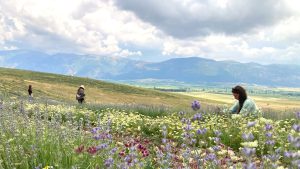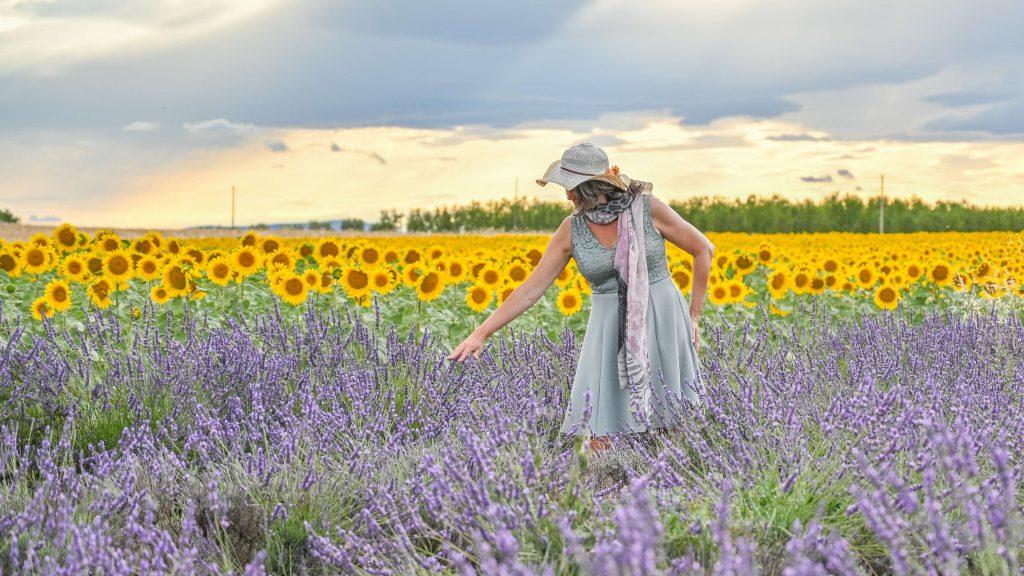
Among the lavender fields at the foot of Mont Ventoux
In July 2021, I travelled to the heart of Provence, to the world-famous lavender region surrounding Valensole. I discovered that lavender blooms in many other parts of France as well, such as in the Ardèche, the Pyrenees, and at the foot of Mont Ventoux. There, the sun shone generously, and the bees buzzed around. The air was filled with the scent of lavender. Everywhere I looked, rows of blue-purple lavender stretched across the fields.
I visited several small-scale, organic lavender distilleries. I had the opportunity to help harvest the lavender, fill the stills, and witness the very first drops of lavender oil appearing. What an intense moment. The scent was earthy, floral, and lightly spicy – the pure essence of the plant.
Ancient wisdom and uses of lavender
The French call lavender the blue gold of Provence. For centuries, farmers, herbalists, and perfumers have used this plant for its healing and protective qualities:
- Lavender in attics to repel moths
- Bundles of dried lavender under pillows for a deep sleep
- Oil and hydrosol to relieve headaches, insect bites, and tension
In Provence, they say:
“Lavande, c’est la paix du cœur et la clarté de l’esprit.”
(Lavender is peace for the heart and clarity for the mind.)
Everywhere at local markets, I saw lavender sachets of all sizes, dried lavender in bouquets, all sorts of lavender-based care products, olive oil soaps with lavender oil, and lavender honey – a true delicacy.
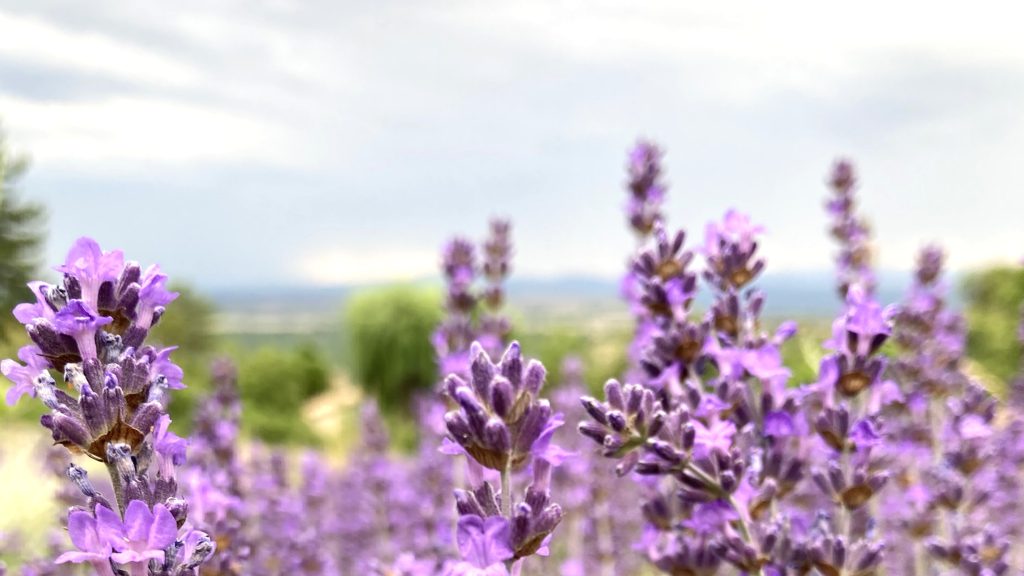
Even outside France, lavender holds an important role in traditions and rituals:
- Persia: used as incense and herb for lucid dreams
- Traditional Chinese Medicinecools the heart and calms the Shen (the mind)
- Berber culture in North Africa: used in birth and protection rituals
Everywhere, the same message resounds lavender brings calm, clarity, and balance.
Origin and history of lavender
Lavender originates from the Mediterranean region, where it has grown for thousands of years on sunny, dry slopes. Its scent and potency made it a beloved plant in ancient times.
- Egypt: used in embalming and rituals
- Greeks and Romanslavender in bathhouses, perfumes, and linen chests. The name comes from lavare - 'to wash'
- Dioscorides (1st century AD):wrote that lavender provided relief for headaches and digestive issues
- Milddle Ages: lavender became a staple in monastery gardens as a medicinal and calming herb
- Hildegard von Bingen (12th century): described lavender as a plant that brings joy and lightness
- Plague epidemics: lavender was used in “Four Thieves Vinegar” to protect against infection
- Victorians: Queen Victoria loved lavender – it became the defining scent of 19th-century England
- Perfume industry: in Grasse (Southern France), lavender (and later lavandin) became a cornerstone of perfume production
When I read these old stories, I see how lavender continually reappears, as a herb woven into everyday life. Sometimes in steam-filled bathhouses, sometimes in monastery gardens where silence reigns. This is how lavender spread through the centuries: from rituals and medicine to perfume and modern aromatherapy, from Provence to the wider world, and even to the Netherlands.
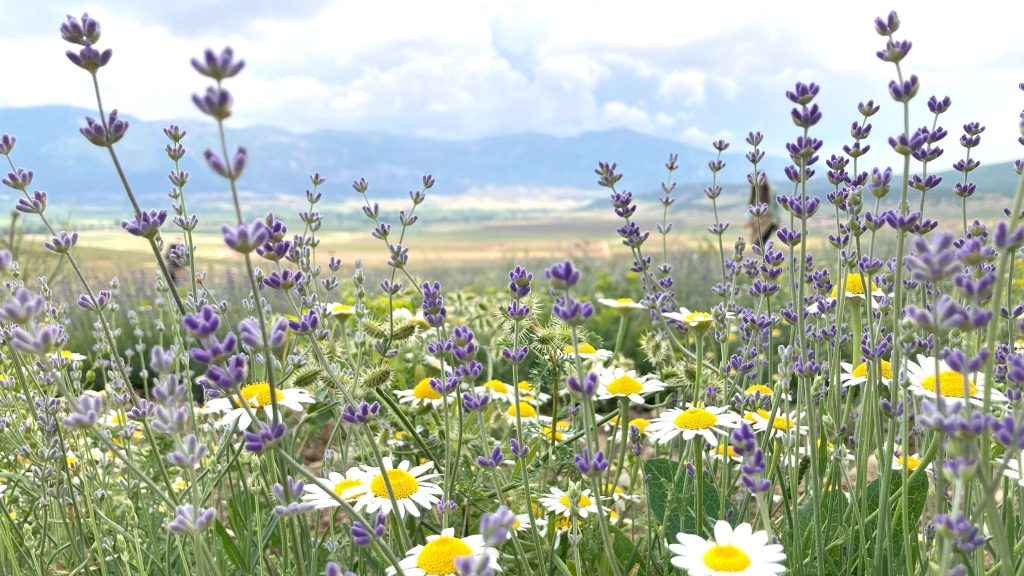
Lavender around the world
Although Provence is for many the quintessential symbol of lavender, the plant now grows worldwide. Lavender fields can be found in, among other places:
- Turkey
- Bulgaria
- Spain
- England
- Morocco
- South Africa
- Tasmania
- Nepal (small-scale cultivation projects)
Each region, climate, and lavender variety gives a unique scent profile and character.
I have had the pleasure of smelling several of them. Whether blooming on the rolling hills of Spain, in the salty air of Tasmania, or on the sunny plateaus of Turkey – every lavender carries something of its land. It absorbs the wind, soil, and light, gifting us with a different fragrant personality each time.
Famous lavender varieties
- Lavandula angustifolia (true lavender or Lavande Fine): soft, floral, refined. The most well-known in aromatherapy.
- Lavandula x intermedia (lavandin): a hybrid with a stronger, sometimes camphorous scent. Widely cultivated in Spain and Southern France.
- Lavandula stoechas: sharp and spicy, mainly in Portugal and Spain.
- Tasmanian lavender: a special variation of Lavandula angustifolia: very pure and ethereal, shaped by the pristine island climate.
Did you know that lavender attracts bees and bumblebees? Lavender honey from Provence is a true delicacy.
Lavender Oil
The reason you can smell lavender so strongly as you walk past it is because the blooming spikes contain scent molecules. Through a distillation process, these are extracted, producing the well-known lavender essential oil. This fragrant and therapeutic oil has been used for centuries in aromatherapy.
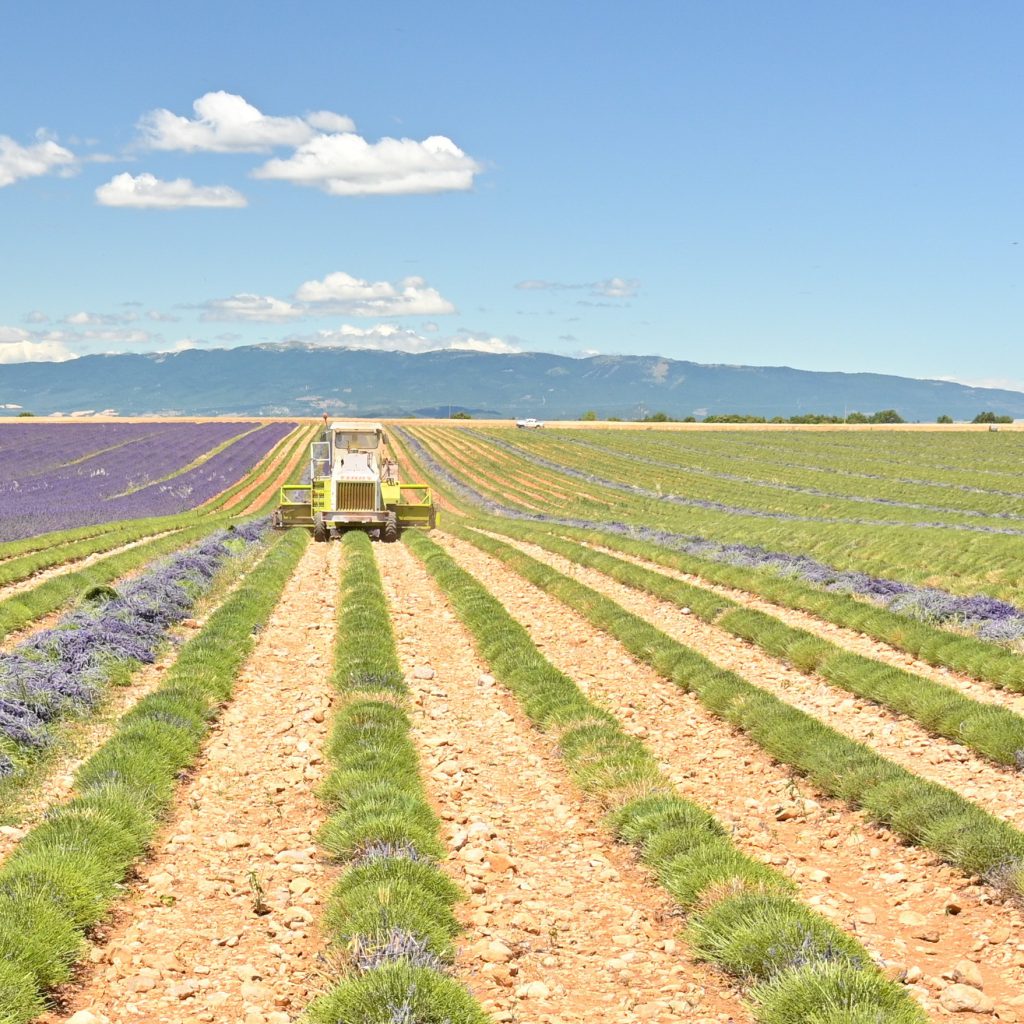
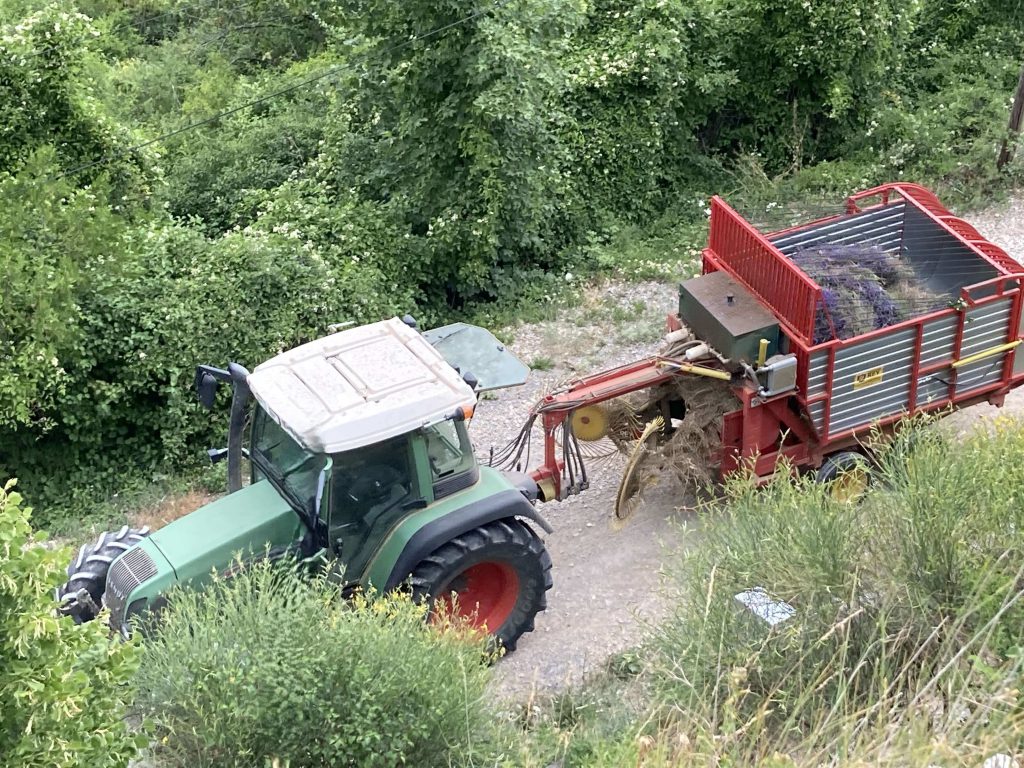
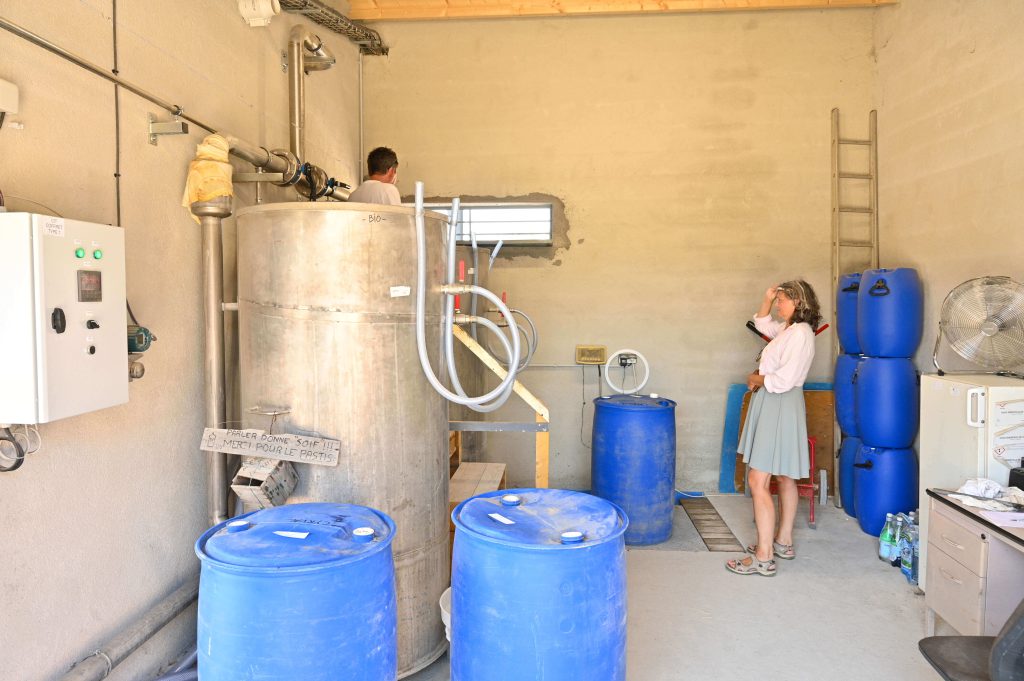
Distilling lavender: how it works
When distilling lavender, the volatile aromatic compounds are released from the flower spikes. This process produces two beautiful products: the essential oil, which floats atop the fragrant hydrosol. You can read more about this special process in my blog ‘Distilling – From Flower to Fragrant Essence’.
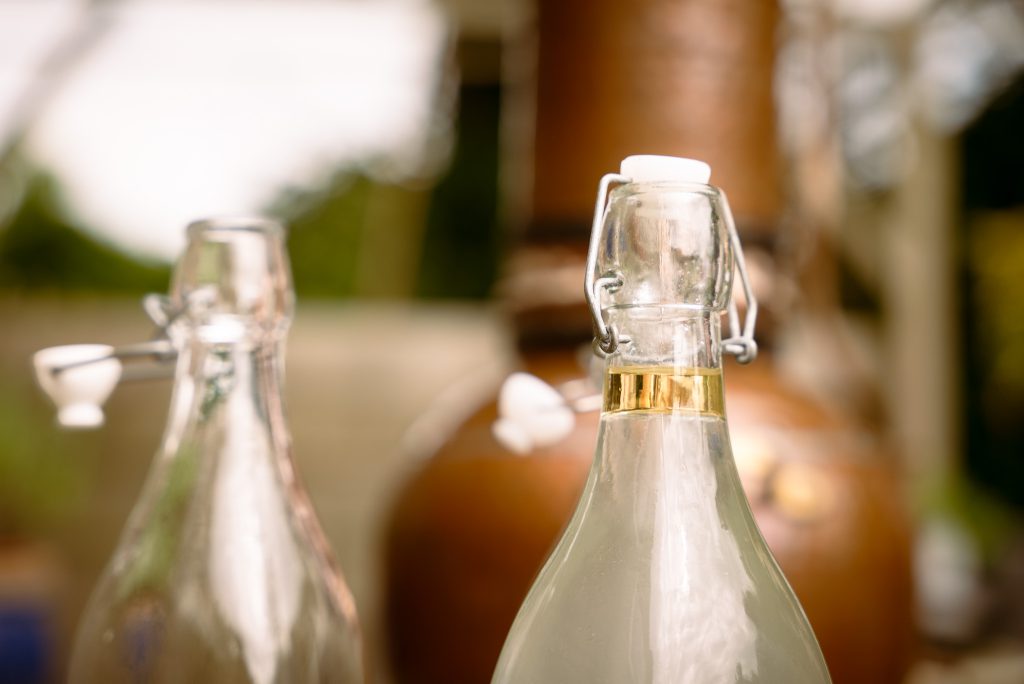
Lavender oil: concentrated, aromatic, and therapeutic
Lavender hydrosolscented water, gentle and refreshing
The moment when the first drops of oil appear during production is always magical for me. The essence of the plant reveals itself. After this initial fragrance, several other aromatic bursts follow. I feel as if I am immersed in a lavender steam bath.
The main components of lavender oil are linalool and linalylacetaat - – these are responsible for its calming effects and soft scent. These compounds are particularly abundant in Lavandula angustifolia, which is why this lavender variety is so prized for therapeutic purposes.
Read more in my blog about lavender oil to discover countless ways to use it in daily life or explore my blog on lavender hydrosol to learn how to enjoy this fragrant water.
Making lavender oil yourself in the Netherlands
The wonderful thing is that you can experience this process yourself. Every summer, I organise a lavender workshop – a Masterclass all about Lavendel.
You will learn:
- How to recognise and harvest lavender
- How a distillation setup works
- The difference between oil and hydrosol
- How to experience and evaluate fragrance
- and so much more
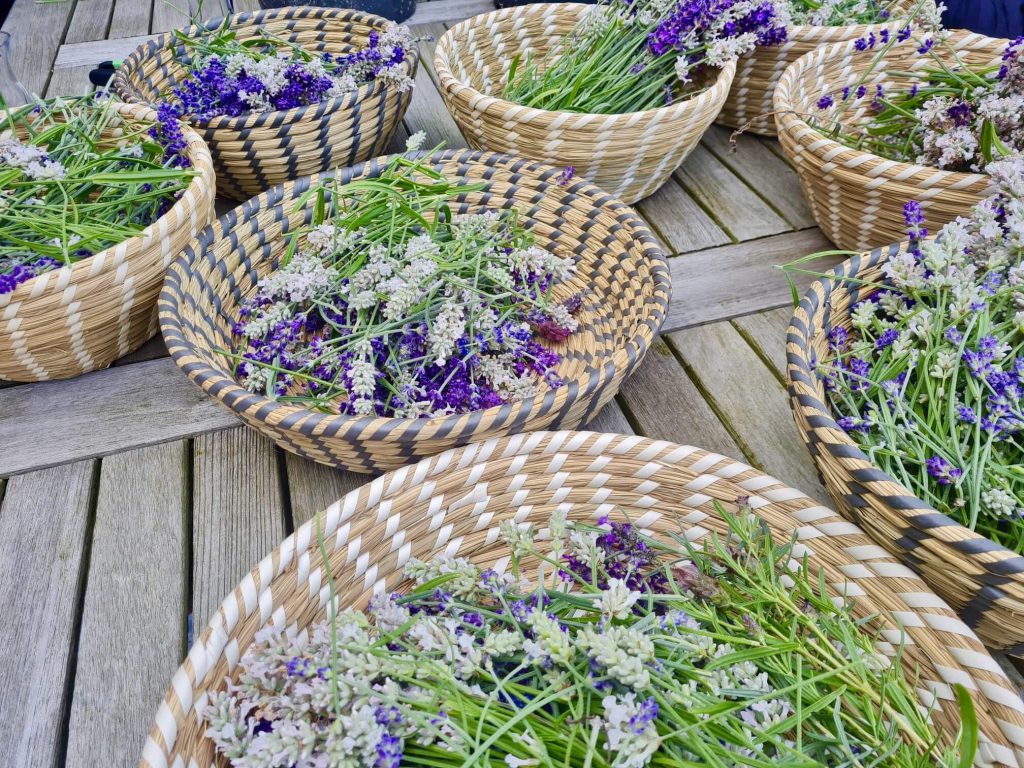
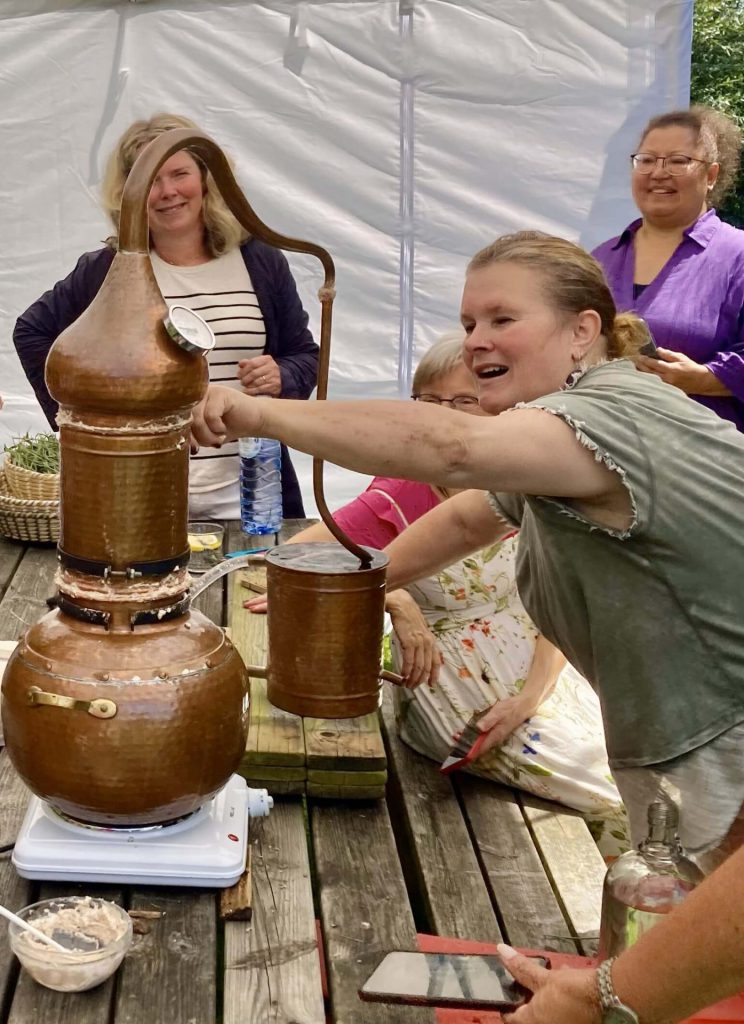
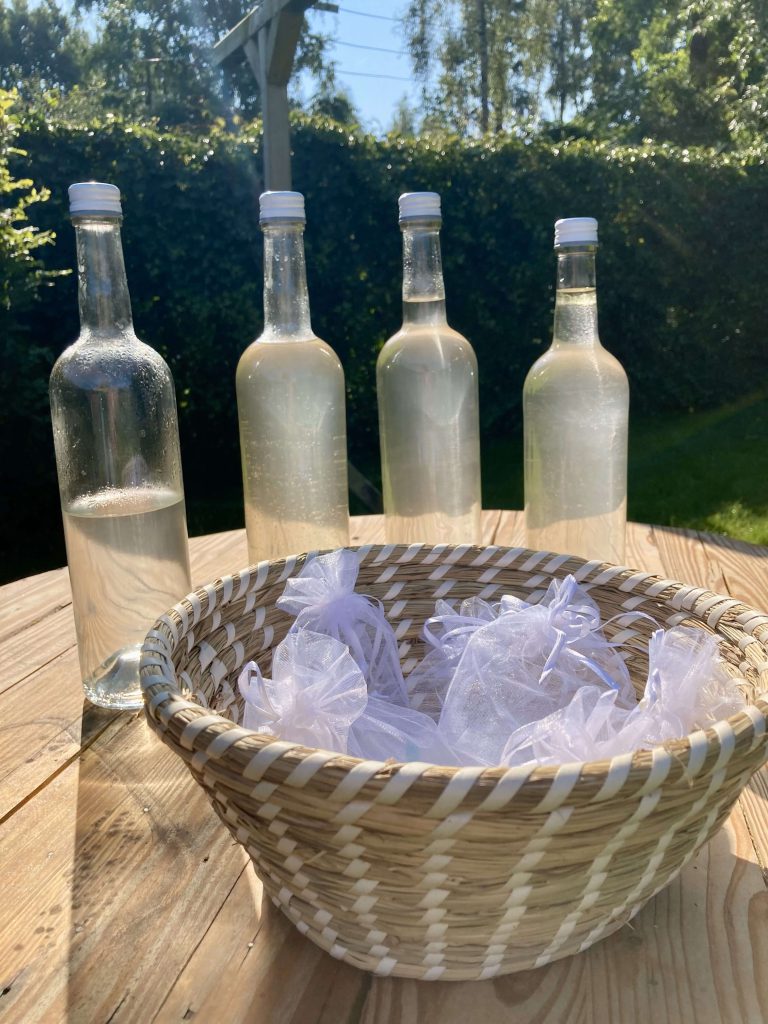
Finally: lavender is more than just a scent
For me, lavender is more than just a fragrance. It has its own story – a story of balance, clarity, and calm. From ancient traditions to modern aromatherapy, from sun-drenched fields in Southern France to gentle scents in your living room.
Lavender shows that fragrance is more than a pleasant perception – it is an experience that can reach deep into your system.
I invite you to experience this for yourself – in scent, in presence, in calm.
"Smelling a fragrance is a soul-to-soul connection. With an open heart, we may receive the scent and listen to its 'story' to discover what it has to offer." With love, Joanne With love, Joanne
